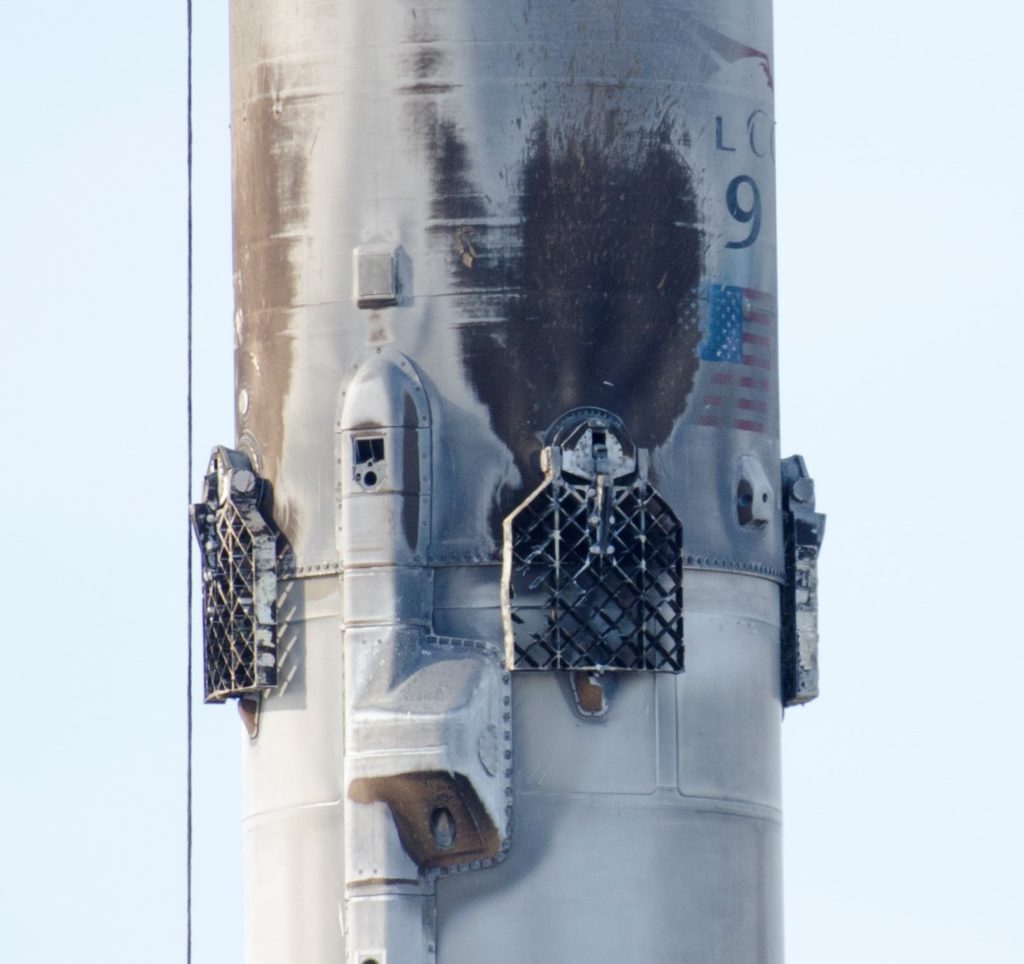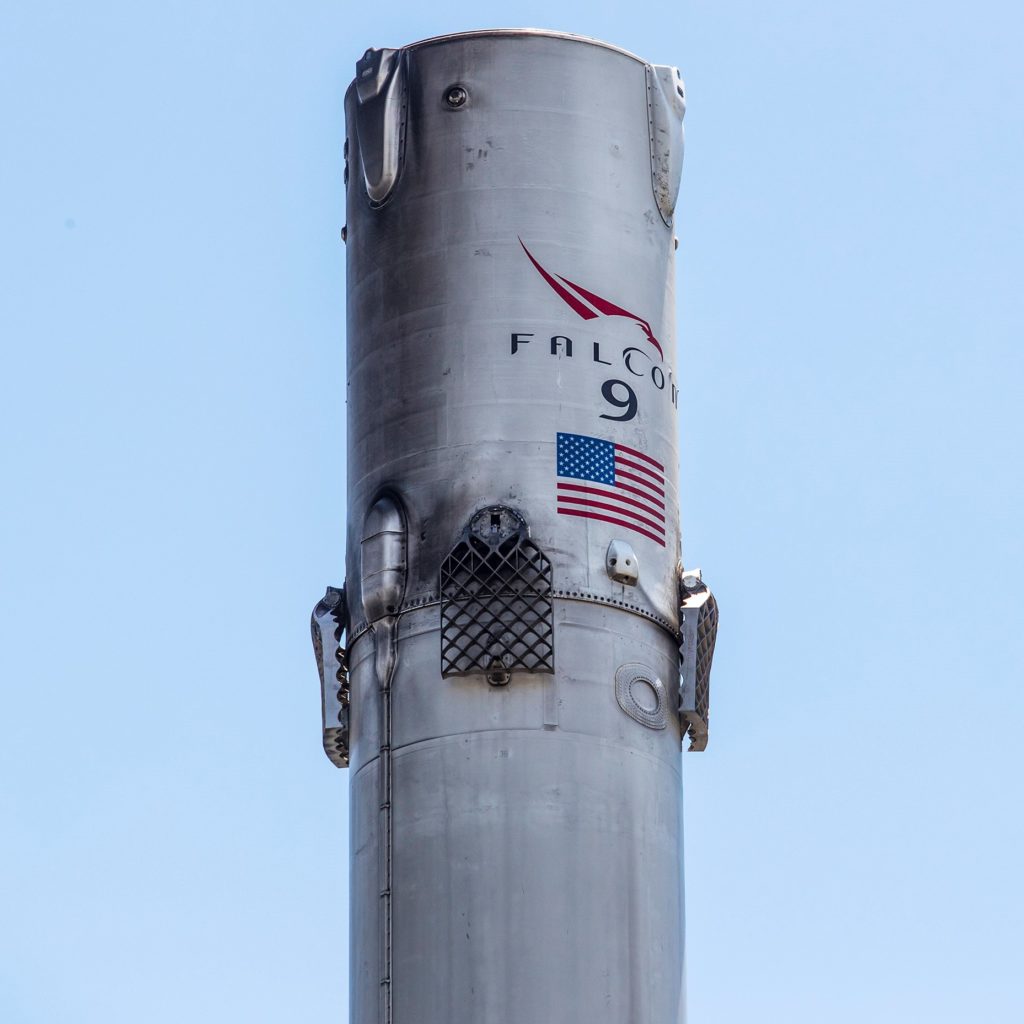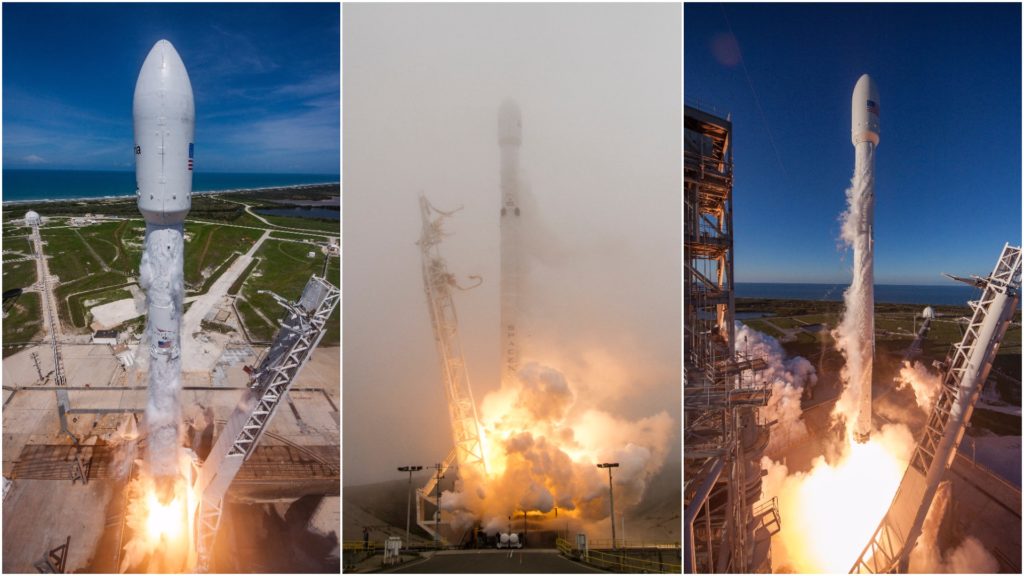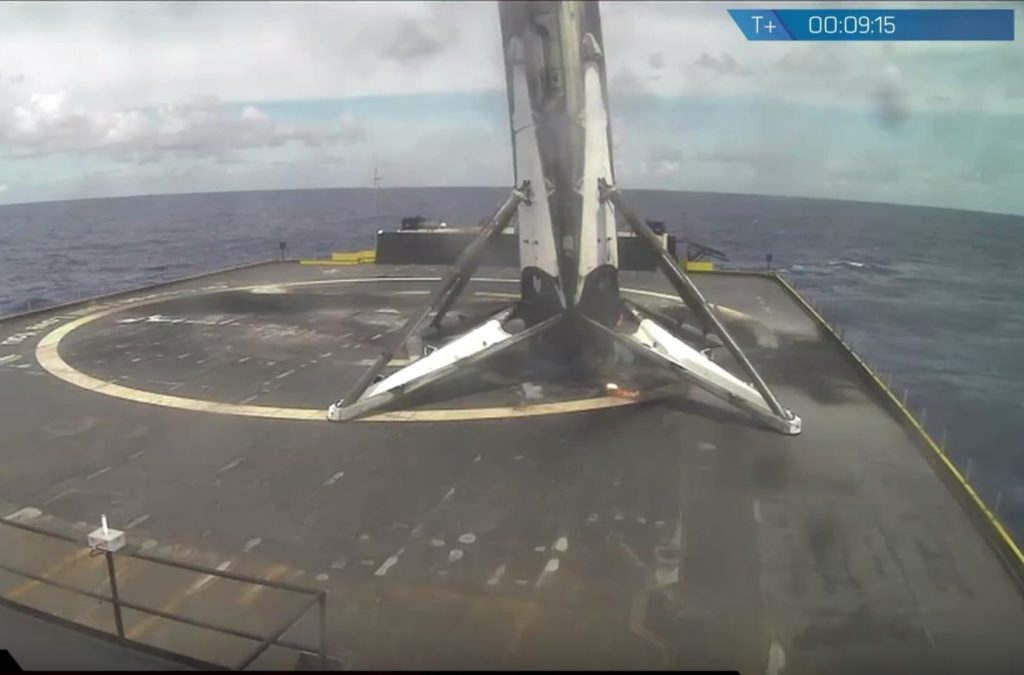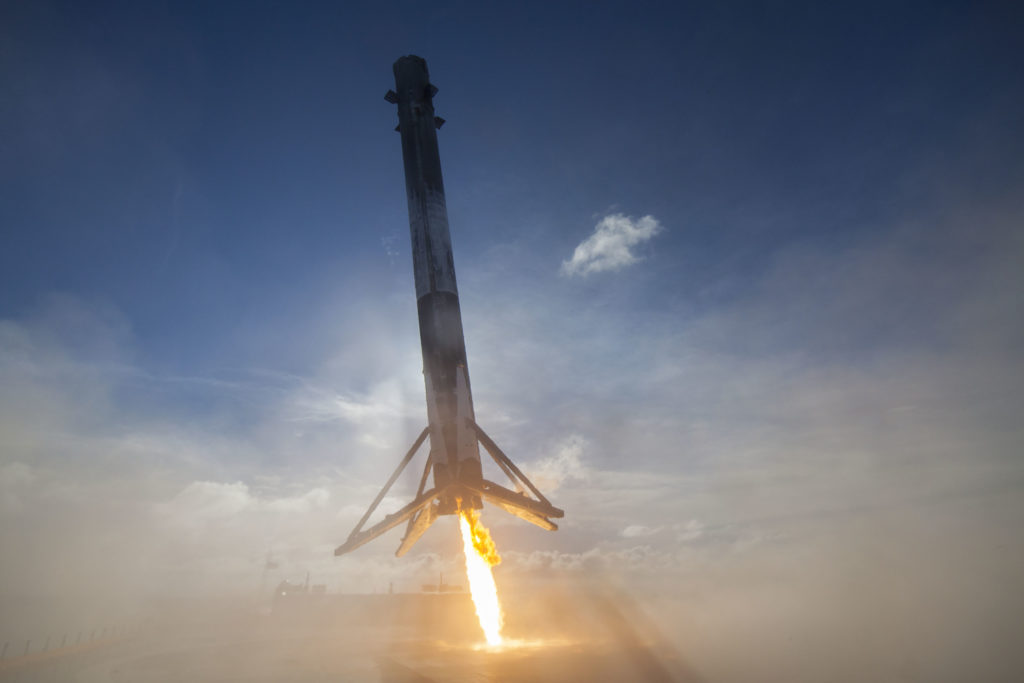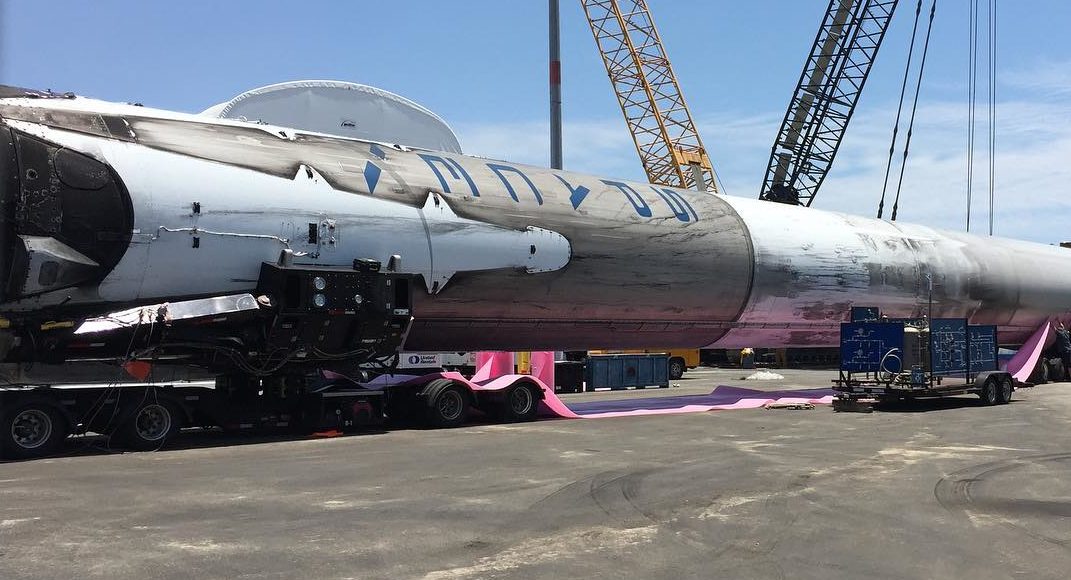
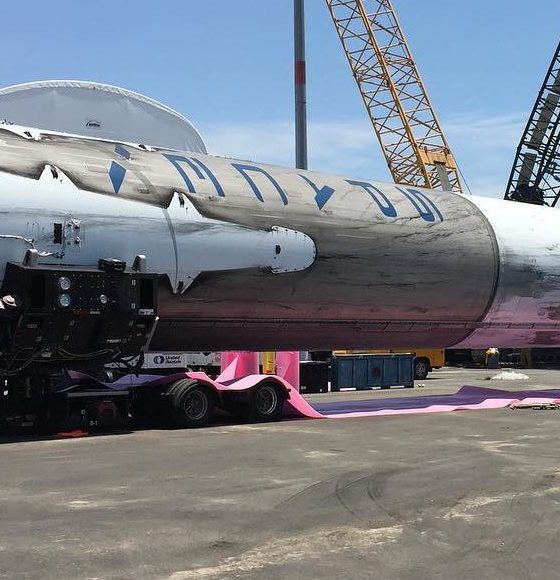
News
SpaceX advances reuse efforts as recovery of two boosters nearly complete
Three launches, two recoveries, two coasts
Just over two weeks ago, SpaceX accomplished its most impressive feat of cadence yet, both launching and recovering two separate Falcon 9s in approximately 49 hours.
Two weeks later and two days after conducting a third launch in 13 days, residents of Los Angeles, California and Cape Canaveral, Florida both coincidentally reported that the two recovered boosters from the previous two launches had both gone horizontal and appeared ready for transport. After docking in Port Canaveral for the second time, Core 1029 was seen entering SpaceX’s LC-39A integration facilities on Friday. The booster on the West coast, 1036, was loaded aboard one of the company’s converted Falcon 9-carrying semi-trucks, likely for transport to SpaceX’s Hawthorne manufacturing facilities, or possibly on a direct route to McGregor, Texas for refurbishment and testing.
https://www.instagram.com/p/BWQSPOgF67i/
This is exciting for several reasons. Foremost, 1036 is a likely candidate for reuse, and SES-10 sets a firm precedent for this. The first commercial reuse of an orbital-class launch vehicle, Falcon 9’s second stage and SES-10 payload launched on a first stage that had flown five months before during the successful launch of Iridium’s first ten NEXT satellites.
Given the potential impact of failure on the adoption of reuse as a commercial standard, SpaceX likely approached the refurbishment of the vehicle with an end-goal balanced between perfection and realism. The orbit of Iridium’s NEXT constellation is the reason the booster was chosen for the first operational reuse: their low Earth polar orbits require Falcon 9’s first stage to undergo a smaller amount of heating and general hypersonic battering when compared with SpaceX’s more common commercial launches of geostationary satellites.
- The central aluminum grid fin of 1029 features a dramatic lack of several vanes, likely melted off during the intense heat of reentry. Expending older boosters is likely helping SpaceX learn how to preserve Block 5 rockets for multiple high-energy missions. (Reddit, u/thedubya22)
- SpaceX will move to titanium grid fins in the future, first trialed during 1036’s launch of Iridium-2. (SpaceX)
A sound example of the extremes of Falcon 9’s suborbital reentry heating can be found in the recovery of 1029, which launched BulgariaSat-1 to a supersynchronous transfer orbit. Noted before the launch by Musk over his favored medium, 1029’s recovery was expected to be the most energetic yet, and thus success was less than certain. The results of this additional heating were obvious, and keen observers rapidly noted that the most stressed of 1029’s aluminum grid fins appeared to be considerably deformed from the stage’s energetic return to OCISLY, completed melted through in places. Considering the debut of more robust titanium grid fins aboard the launch of Iridium-2 only two days later, the quasi-destruction of one of 1029’s grid fins was somewhat fitting. 1036’s titanium grid fins looked barely worse for wear after a landing that was also deemed aggressive due to Just Read The Instructions having to avoid bad weather just before the landing.
Stirring explorations of the limits of recovery aside, both boosters are now ready to be examined and refurbished ahead of one or even two additional launches. SpaceX’s willingness to use the booster recovered from the launch of Thaicom-8 has already established that the company has a certain level of confidence in the reuse of first stages that have suffered high-velocity recoveries. Thus, 1036 is nearly certain to be reused, and 1029 has a strong chance as well.
- Falcon 9 1029’s lean is decidedly more extreme than the stage that launched Thaicom-8. (SpaceX)
- The aggressive Atlantic Ocean landing of Thaicom-8’s Falcon 9 first stage. (SpaceX)
The hot recovery of 1029 further marked the first use of a remotely-operated recovery robot aboard OCISLY, and could be seen below the leaning first stage as it entered Port Canaveral. It appears that its first use was a success, and the robot will certainly have a busy future of remotely securing first stages after landing. Remote securing and safing will both improve safety for those directly involved in on-ocean recovery, but it is also intended to expedite the process in order to ensure that OCISLY is prepared to recover Falcon 9 as often as possible. SpaceX’s recent cadence accomplishment of three launches in 13 days drives home the reality that weekly launches are readily achievable for the company, so long as there are pads available and payloads to be launched.
Weekly recoveries for an ASDS like OCISLY would be extremely time-sensitive, given the need for at least several days to simply reach the point of landing in the Pacific, and the addition of rapid robotic alternatives for operations aboard the drone ships could make such a goal more achievable. With SpaceX’s land-based landing facilities in perspective, it is easier to imagine a close future with weekly launches and landings of both Falcon 9 and Falcon Heavy, and possibly the propulsive-landing Dragon 2 spacecraft further down the road.

1036 horizontal and ready for transport. (Instagram/Luka Hargett)
A symbiosis of SpaceX fans and those familiar with the metal and chemistry have also led to fans speculating that the now-standard titanium grid fins may develop a subtle, golden patina of oxygenation after many reuses. Nothing could be more picturesquely symbolic of the successes SpaceX has had in their pursuit of reusable rocketry.

News
Tesla Full Self-Driving lands in a new country, its 7th
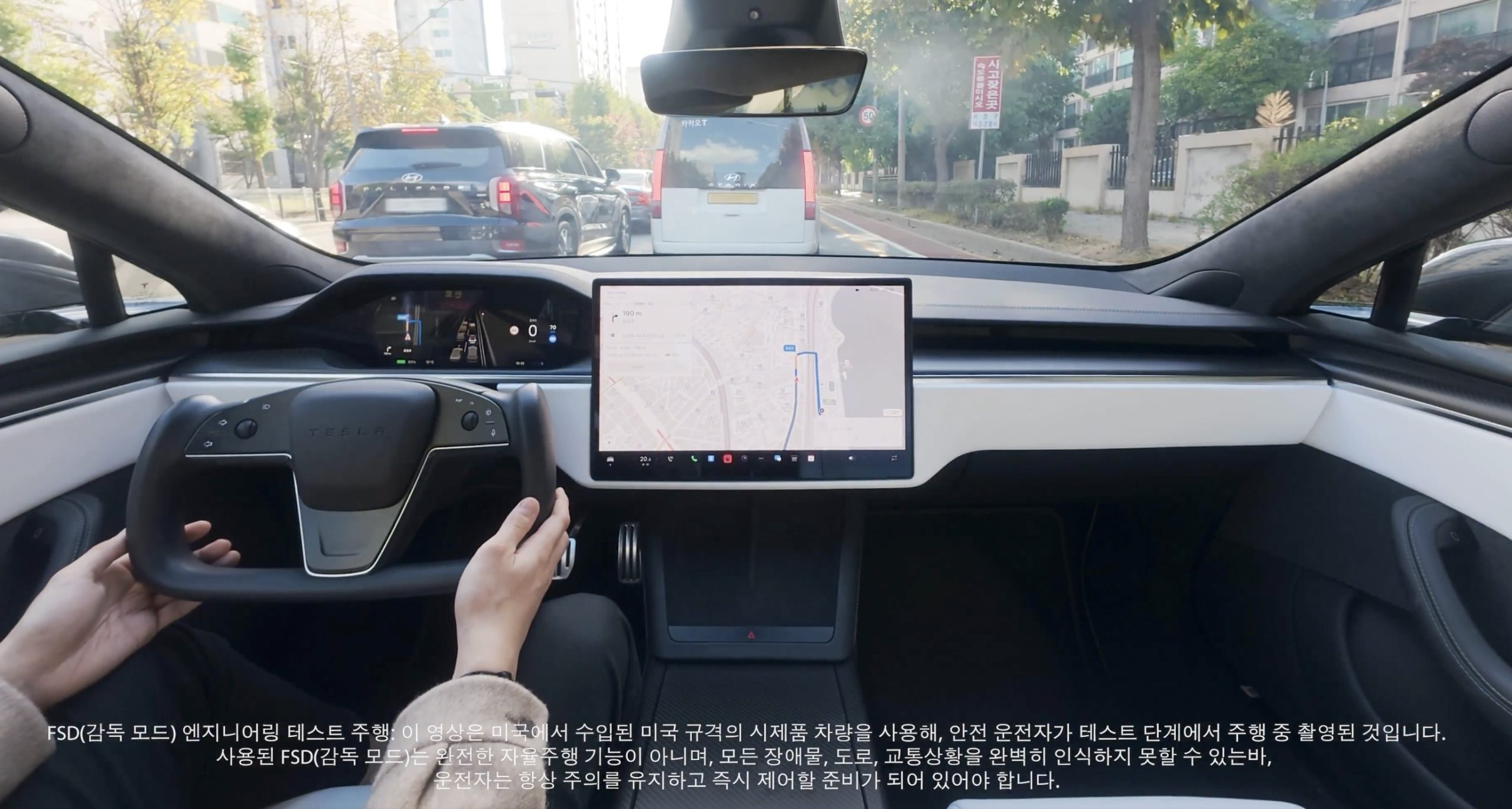
Tesla Full Self-Driving has officially landed in a new country today, its seventh overall after it launched in both Australia and New Zealand earlier this year.
On Sunday, Tesla owners in South Korea reported that the company’s Full Self-Driving (Supervised) had started arriving in their vehicles. Owners reported that it was v14.1.4, which is not the latest version available in other countries, but is one of the most recent releases Tesla has deployed to drivers:
From 6 to 7
Tesla Full Self-Driving has launched in South Korea; the 7th country to have FSD https://t.co/X6gm1SyoxV
— TESLARATI (@Teslarati) November 23, 2025
This marks the seventh country in which Tesla has enabled its Full Self-Driving suite, following the United States and Puerto Rico, Canada, China, Mexico, Australia, and New Zealand.
Tesla launched Full Self-Driving most recently in Australia and New Zealand about three months ago. The expansion is a major breakthrough for the company as it aims to launch Full Self-Driving on a global scale.
However, the company’s biggest challenge thus far has been getting European regulatory agencies to handle the red tape that has inhibited Tesla from launching its semi-autonomous driving suite on the continent. Recently, it admitted that it sees a pathway through Dutch regulatory bodies, which seem to be the most willing to work with Tesla to get FSD in Europe.
Tesla Full Self-Driving appears to be heading to Europe soon
The company said that it has driven over 1 million kilometers safely on European roads across 17 different countries in internal testing. But its path to success will be by “partnering with the Dutch approval authority RDW to gain exemption for the feature. This involves proving compliance with existing regulations (UN-R-171 DCAS) + filing an exemption (EU Article 39) for yet-to-be-regulated behaviors like Level 2 systems off-highway, system-initiated lane changes with hands-off the wheel, etc.”
Perhaps the expansion into Europe will be the biggest challenge for Tesla, but it could also yield major results and advantages for the company moving forward. Tesla said it hopes to have FSD available in Europe sometime early next year.
For now, the expansion in South Korea is the latest win for Tesla and its self-driving efforts. In the U.S., it now turns its focus toward fully autonomous operation, as it works with state agencies to launch Robotaxi outside of Texas, California, and most recently, Arizona.
Elon Musk
Tesla CEO Elon Musk teases insane capabilities of next major FSD update
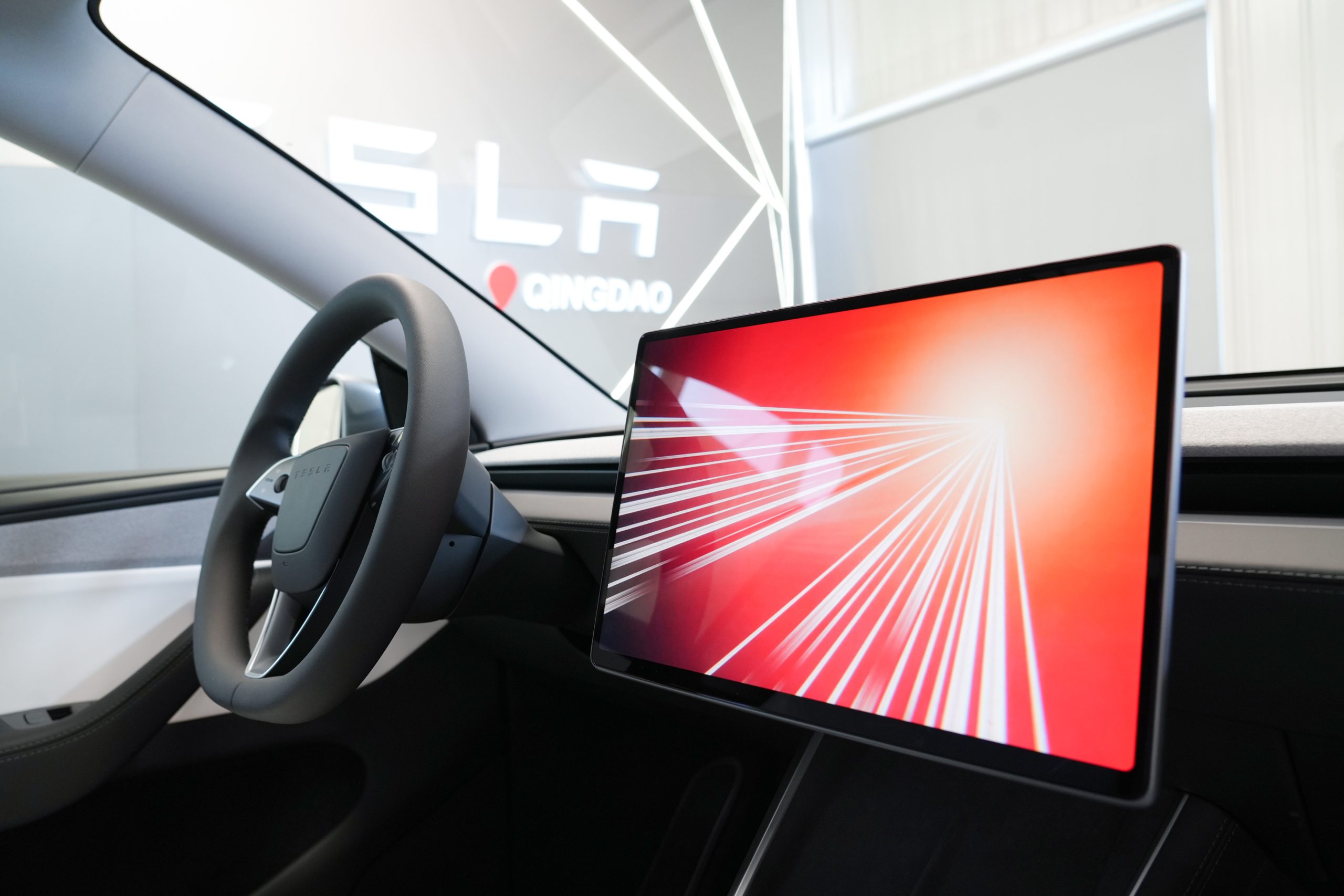
Tesla CEO Elon Musk teased the insane capabilities of the next major Full Self-Driving update just hours after the company rolled out version 14.2 to owners.
Tesla Full Self-Driving v14.2 had some major improvements from the previous iteration of v14.1.x. We were on v14.1.7, the most advanced configuration of the v14.1 family, before Tesla transitioned us and others to v14.2.
However, Musk has said that the improvements coming in the next major update, which will be v14.3, will be where “the last big piece of the puzzle finally lands.”
14.3 is where the last big piece of the puzzle finally lands
— Elon Musk (@elonmusk) November 21, 2025
There were some major improvements with v14.2, most notably, Tesla seemed to narrow in on the triggers that caused issues with hesitation and brake stabbing in v14.1.x.
One of the most discussed issues with the past rollout was that of brake stabbing, where the vehicle would contemplate proceeding with a route as traffic was coming from other directions.
We experienced it most frequently at intersections, especially four-way stop signs.
Elon Musk hints at when Tesla can fix this FSD complaint with v14
In our review of it yesterday, it was evident that this issue had been resolved, at least to the extent that we had no issues with it in a 62-minute drive, which you can watch here.
Some owners also reported a more relaxed driver monitoring system, which is something Tesla said it was working on as it hopes to allow drivers to text during operation in the coming months. We did not test this, as laws in Pennsylvania prohibit the use of phones at any time due to the new Paul Miller’s Law, which took effect earlier this year.
However, the improvements indicate that Tesla is certainly headed toward a much more sentient FSD experience, so much so that Musk’s language seems to be more indicative of a more relaxed experience in terms of overall supervision from the driver, especially with v14.3.
Musk did not release or discuss a definitive timeline for the release of v14.3, especially as v14.2 just rolled out to Early Access Program (EAP) members yesterday. However, v14.1 rolled out to Tesla owners just a few weeks ago in late 2025. There is the potential that v14.3 could be part of the coming Holiday Update, or potentially in a release of its own before the New Year.
News
Tesla Full Self-Driving v14.2 – Full Review, the Good and the Bad

Tesla rolled out Full Self-Driving version 14.2 yesterday to members of the Early Access Program (EAP). Expectations were high, and Tesla surely delivered.
With the rollout of Tesla FSD v14.2, there were major benchmarks for improvement from the v14.1 suite, which spanned across seven improvements. Our final experience with v14.1 was with v14.1.7, and to be honest, things were good, but it felt like there were a handful of regressions from previous iterations.
While there were improvements in brake stabbing and hesitation, we did experience a few small interventions related to navigation and just overall performance. It was nothing major; there were no critical takeovers that required any major publicity, as they were more or less subjective things that I was not particularly comfortable with. Other drivers might have been more relaxed.
With v14.2 hitting our cars yesterday, there were a handful of things we truly noticed in terms of improvement, most notably the lack of brake stabbing and hesitation, a major complaint with v14.1.x.
However, in a 62-minute drive that was fully recorded, there were a lot of positives, and only one true complaint, which was something we haven’t had issues with in the past.
The Good
Lack of Brake Stabbing and Hesitation
Perhaps the most notable and publicized issue with v14.1.x was the presence of brake stabbing and hesitation. Arriving at intersections was particularly nerve-racking on the previous version simply because of this. At four-way stops, the car would not be assertive enough to take its turn, especially when other vehicles at the same intersection would inch forward or start to move.
This was a major problem.
However, there were no instances of this yesterday on our lengthy drive. It was much more assertive when arriving at these types of scenarios, but was also more patient when FSD knew it was not the car’s turn to proceed.
Can report on v14.2 today there were ZERO instances of break stabbing or hesitation at intersections today
It was a significant improvement from v14.1.x
— TESLARATI (@Teslarati) November 21, 2025
This improvement was the most noticeable throughout the drive, along with fixes in overall smoothness.
Speed Profiles Seem to Be More Reasonable
There were a handful of FSD v14 users who felt as if the loss of a Max Speed setting was a negative. However, these complaints will, in our opinion, begin to subside, especially as things have seemed to be refined quite nicely with v14.2.
Freeway driving is where this is especially noticeable. If it’s traveling too slow, just switch to a faster profile. If it’s too fast, switch to a slower profile. However, the speeds seem to be much more defined with each Speed Profile, which is something that I really find to be a huge advantage. Previously, you could tell the difference in speeds, but not in driving styles. At times, Standard felt a lot like Hurry. Now, you can clearly tell the difference between the two.
It seems as if Tesla made a goal that drivers should be able to tell which Speed Profile is active if it was not shown on the screen. With v14.1.x, this was not necessarily something that could be done. With v14.2, if someone tested me on which Speed Profile was being used, I’m fairly certain I could pick each one.
Better Overall Operation
I felt, at times, especially with v14.1.7, there were some jerky movements. Nothing that was super alarming, but there were times when things just felt a little more finicky than others.
v14.2 feels much smoother overall, with really great decision-making, lane changes that feel second nature, and a great speed of travel. It was a very comfortable ride.
The Bad
Parking
It feels as if there was a slight regression in parking quality, as both times v14.2 pulled into parking spots, I would have felt compelled to adjust manually if I were staying at my destinations. For the sake of testing, at my first destination, I arrived, allowed the car to park, and then left. At the tail-end of testing, I walked inside the store that FSD v14.2 drove me to, so I had to adjust the parking manually.
This was pretty disappointing. Apart from parking at Superchargers, which is always flawless, parking performance is something that needs some attention. The release notes for v14.2. state that parking spot selection and parking quality will improve with future versions.
Any issues with parking on your end? 14.1.7 didn’t have this trouble with parking pic.twitter.com/JPLRO2obUj
— TESLARATI (@Teslarati) November 21, 2025
However, this was truly my only complaint about v14.2.
You can check out our full 62-minute ride-along below:
